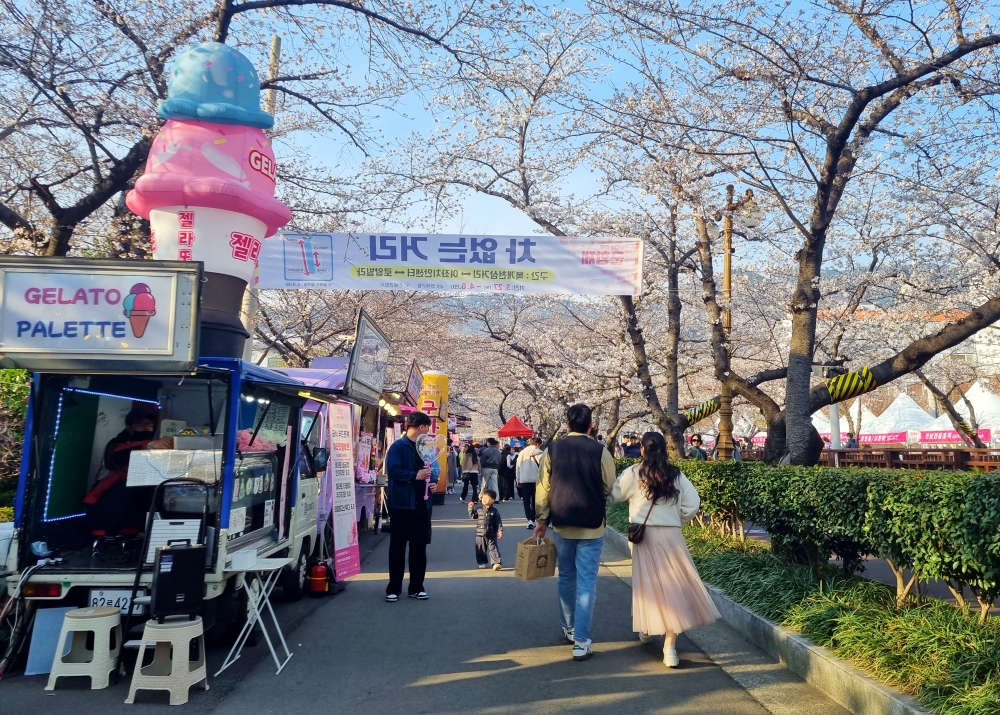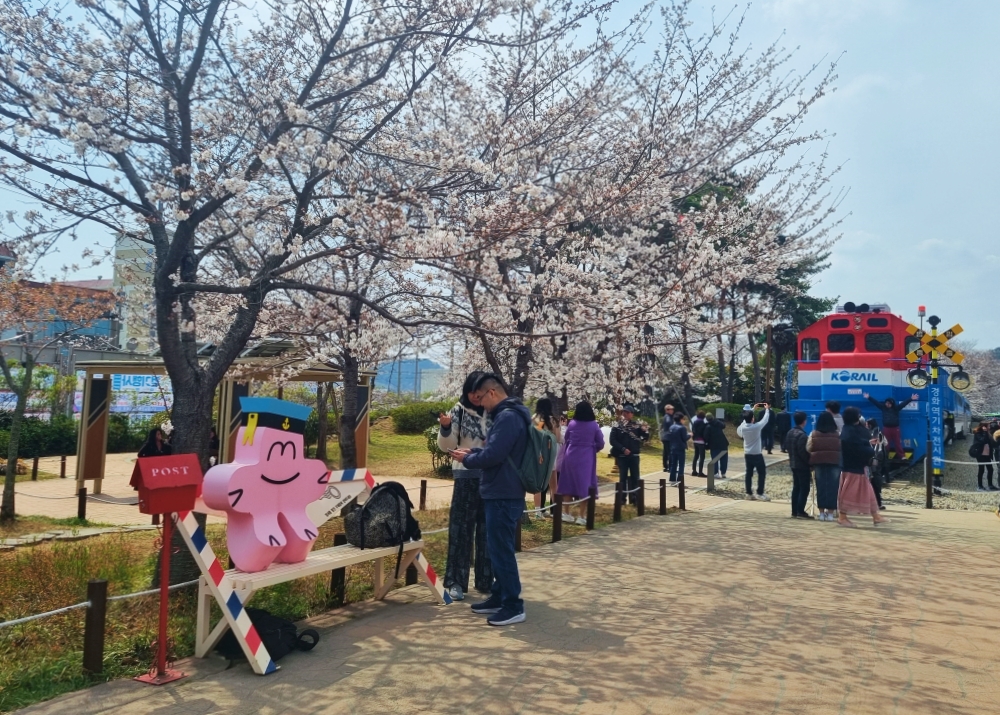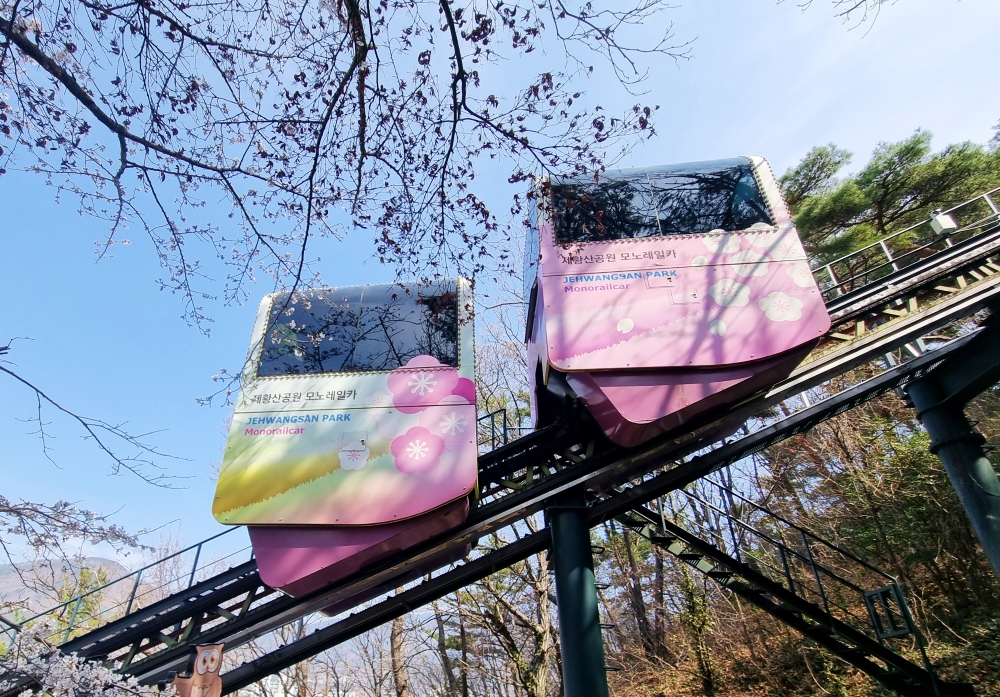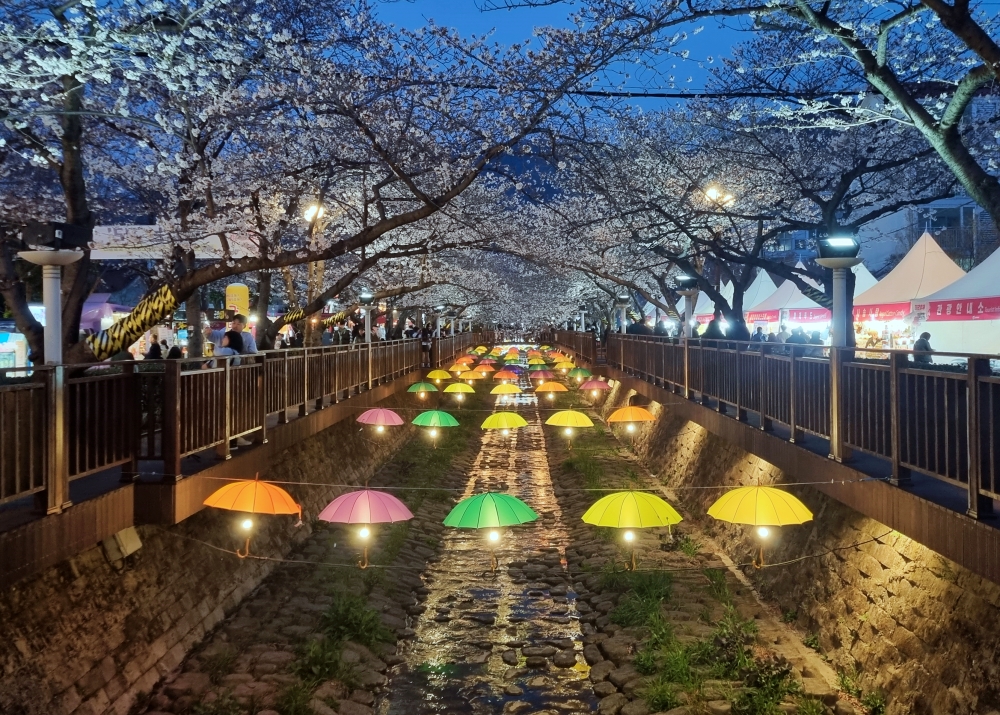
Visitors on March 31 walk around the Jinhae Gunhangje Festival in Changwon, Gyeongsangnam-do Province.
By Aisylu Akhmetzianova
Photos = Aisylu Akhmetzianova
The end of March is a time filled with the excitement of waiting for spring. But in Seoul, the temperature dropped below zero and it even snowed.
I couldn't wait any longer, I had to search for spring. My destination was Changwon, which is designated a special city in Gyeongsangnam-do Province and home to the Jinhae Gunhangje Festival, the country's largest for cherry blossoms.
Now in its 63rd year, the festival runs through April 6 after opening on March 29.
I arrived at Changwon Station on March 31. Half of the cherry blossoms in the city had bloomed, and seeing the streetscape colored in soft pink, I couldn't help but smile. I felt that I had finally found spring in 2025.
I thought where should I begin? After a moment of thought, I decided to follow a cherry blossom course recommended by the city government.
Gyeonghwa Station Park

Cherry blossoms and a Saemaeul train decorate Gyeonghwa Station Park in Changwon, Gyeongsangnam-do Province.
My first stop was Gyeonghwa Station Park, one of the most famous cherry blossom spots in the city's Jinhae-gu District along with Yeojwacheon Stream. Built around the now-closed station, the venue contains the stories and memories of where a train once passed. Along the tracks were rows of cherry trees that formed a dazzling tunnel of blossoms that plenty of tourists took snapshots of in various poses.
Jehwangsan Park

A monorail car ascends a hill at Jehwangsan Park in Changwon, Gyeongsangnam-do Province.
Following the recommended route, I ate lunch at Jungang Market before heading to Jehwangsan Park in Jinhae-gu. I paid KRW 3,000 to ride the monorail to the top of the hill and see a 28 m-high tower.
First built by the Japanese colonial government to mark its victory in the 1904-05 Russo-Japanese War, it was later rebuilt in 1967 as a nine-story tower symbolizing a naval vessel. The tower now houses Jinhae Museum of Changwon City.
As I reached the observation deck on the seventh floor, a spontaneous "Wow!" came from my lips. Cherry blossoms blanketed the city like descending soft pink clouds, and between them, the blue sea shimmered in the sunlight, gently rippling in the spring breeze. Had I not visited this spot to capture the full beauty of Jinhae-gu's spring at a glance, I would have regretted it for a long time.
Yeojwacheon Stream

Nighttime view of Yeojwacheon Starlight Festival in Changwon, Gyeongsangnam-do Province
Wondering how beautiful the stream would look at night, I returned to see the sunset there after spending time at a nearby cafe. As expected, the colorful evening lights illuminated the blossoms for an even more enchanting and dreamy atmosphere.
This was, however, not the end of cherry blossom hotspots in Changwon. Changwon (Jinhae) Marine Park near the sea and Anmingogae Hill in the mountains began to see blossoms blooming due to slightly cooler temperatures. They were expected to reach full bloom that weekend or early the week after.
The park had cherry blossoms that bloom twice a year in spring and fall for an even more unique sight. So please visit on the weekend Changwon, a city where a blue sea meets cherry blossoms, to enjoy a spring atmosphere.
aisylu@korea.kr